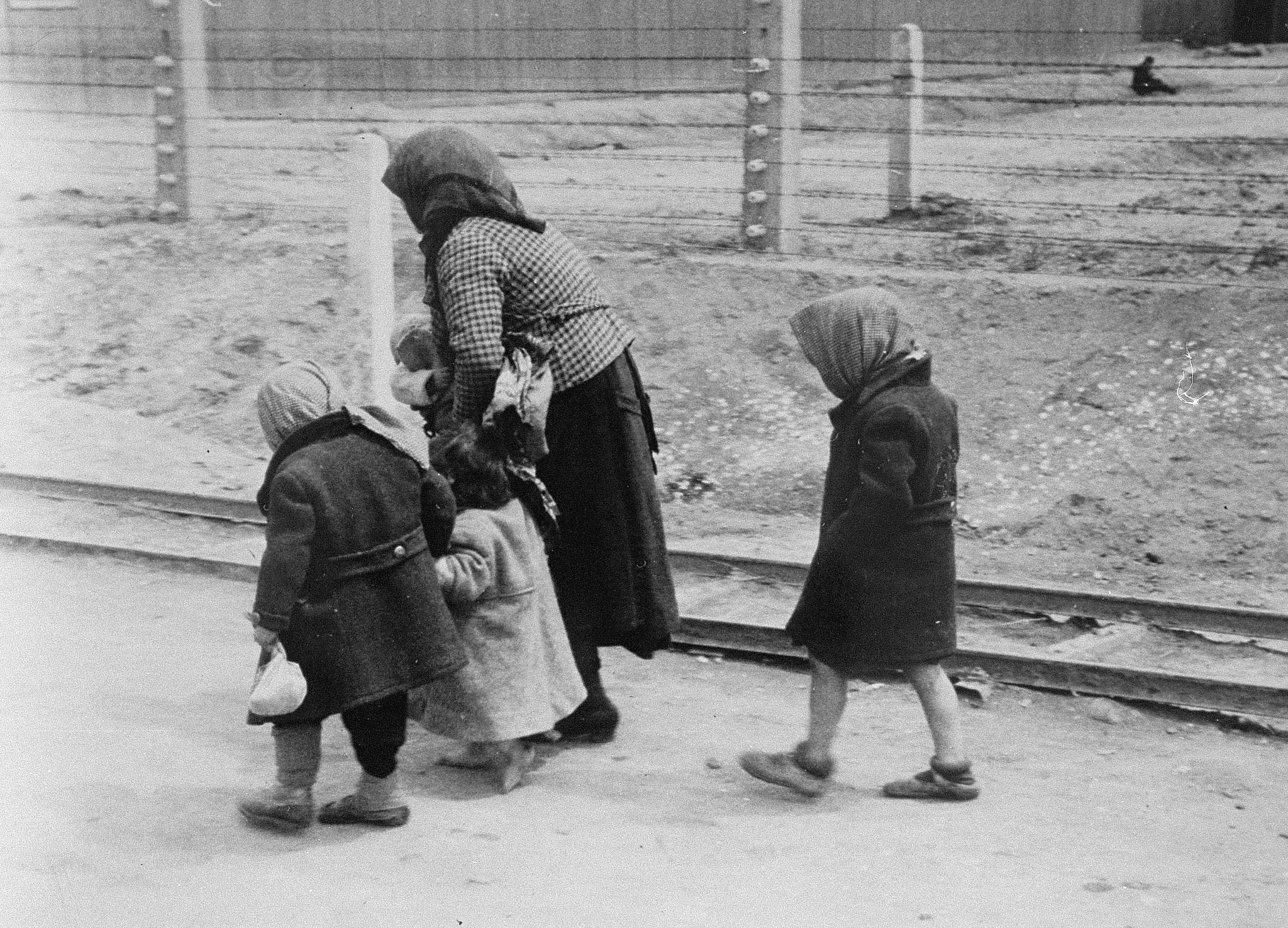Editor’s note: This article was published in June of 2018.
What’s been happening at the U.S.-Mexican border right now is horrific. Children are being forcibly separated from their parents and placed in detention centers with terrible conditions.
The current crisis is sparked by an April 2018 policy, when Attorney General Jeff Sessions announced a “zero-tolerance” policy on illegal immigration. What is zero-tolerance? As The Washington Post explains, “When families or individuals are apprehended by the Border Patrol, they’re taken into DHS [Department of Homeland Security] custody. Under the zero-tolerance policy, DHS officials refer any adult ‘believed to have committed any crime, including illegal entry,’ to the Justice Department for prosecution. If they’re convicted, they’re usually sentenced to time served. The next step would be deportation proceedings.”
The images coming out of these children detention centers are awful. And, the policies and actions are sparking many, many comparisons to the Holocaust. But not everybody feels these comparisons are accurate.
We’re here to break down both sides for you, using some very helpful tweets.
Why people think the comparison works
The key arguments for comparing what happened in Nazi Germany to what is happening in modern day United States focus on three key points: the concept of “illegality,” the idea that we’re already on the road to another genocide, and a frustration with the focus on the semantics of the comparison. The comparison also hinges on the “just following orders” parallels between ICE and the Gestapo, as well as the similarities in language and visuals of it all.
Let’s go through each of these arguments:
1. The concept of “illegal” as a cover for unethical behavior.
https://twitter.com/isi_kbreen/status/1008416476649459719
"Apartheid was LEGAL. The Holocaust was LEGAL. Slavery was LEGAL. Colonialism was LEGAL. Legality is a matter of power, not justice." (A friend texted me this.)
— Terry McMillan (@MsTerryMcMillan) June 20, 2018
This part of the comparison argument focuses on a specific part of what’s actually happening: the idea that crossing the American-Mexican border without documentation is illegal. As many Twitter users argue, just because something is “illegal” (like being Jewish was classified in Nazi Germany), does not make it valid.
2. Focus on the atrocities instead of semantics.
https://twitter.com/PopChassid/status/1008772880618934272
Today in Both Things Are True:
1. What's happening on the border isn't Auschwitz.
2. It's still pretty fucking bad. And if you're more offended by the misguided Holocaust comparisons than the actual horrible thing that's happening . . . your values need recalibrating.
— Radley Balko (@radleybalko) June 20, 2018
https://twitter.com/DavidKlion/status/1009107201804439552
probably better to be safe than sorry with worrying about the whole locking-children-in-cages situation escalating. i'd rather live in a world where people were vocal & wrong with their holocaust comparisons than one where they were correct but silent
— Shaun (shaunvids on bsky) (@shaun_vids) June 19, 2018
These arguments are essentially saying: If you’re more bothered by the analogy/comparison than what is actually happening, something is wrong.
3. We’re “already several stages along the way.”
I’ve seen several tweets comparing this to Nazis / The Holocaust and saying things like “this is how it begins”. I teach Holocaust Literature so let me be clear – this ISN’T how it began. This is already several stages along the way.#NeverAgainIsNow https://t.co/HaYTrVyOGr
— Dr Aviva Dautch (@AvivaDautch) June 19, 2018
The Holocaust comparisons have jumped the shark at this point. This is not just "how it starts." Babies are in cages. That's already at least chapter 3.
— Lauren Duca (@laurenduca) June 20, 2018
https://twitter.com/4everNeverTrump/status/1009074699572146176
I don't understand how every historian and social scientist who works on internment/concentration camps can say 'this is how horrible things start' and so many people still ask, 'but is it really?'
YES.
The answer is YES.— Terrence Peterson (@dr_tgpeterson) June 18, 2018
Here we have scholars and relatives of Holocaust survivors (and sometimes even survivors themselves) pointing out that the U.S. is “on the way” to another Holocaust. Their argument is that the detainment centers on the border are already past “phase #1” of the Holocaust.
4. The language is so similar.
Infest. The Nazis called Jews carriers of disease. As the US Holocaust Museum notes, in a film titled “The Eternal Jew,” a notorious sequence “compares Jews to rats that carry contagion, flood the continent, and devour precious resources.” https://t.co/E4GLv2Ghh2
— Shannon Watts (@shannonrwatts) June 19, 2018
President Trump just said that immigrants "pour into and infest our country." This is more than reminiscent of the language of Hitler's Germany as is his monstrous policy of snatching crying children from their parents at the border. https://t.co/K2cvwlJDEk
— Barbra Streisand (@BarbraStreisand) June 19, 2018
Notice how Trump dehumanizes people who are brown and black to justify atrocities. Hitler did this too with the Jews (untermensch).
Starting on his campaign
“Mexican rapists”
in sanctuary cities
“breeding”
calling people with brown skin
“animals”
saying immigrants
“infest” pic.twitter.com/hJ1ZzstKy0— Amy Siskind 🏳️🌈 (@Amy_Siskind) June 19, 2018
Many are pointing out how Trump’s dehumanizing use of the word “infest” to describe the refugees and migrants is reminiscent of the language used by Nazi leaders to describe Jews. Jews were called “vermin” and “dirty” long before they were sent away to death camps and concentration camps.
As Aviya Kushner writes in The Forward, “Characterizing people as vermin has historically been a precursor to murder and genocide. The Nazis built on centuries-old hatred of Jews as carriers of disease in a film titled ‘Der Ewige Jude,’ or ‘The Eternal Jew.’ As the U.S. Holocaust Memorial Museum notes on its website, in a section helpfully titled ‘Defining the Enemy:’ ‘One of the film’s most notorious sequences compares Jews to rats that carry contagion, flood the continent, and devour precious resources.'”
As one writer tweeted in a thread: “I find this tactic to be very obvious.”
https://twitter.com/nsilverberg/status/1009424982139654146
5. Visual comparisons
1) Wedding rings taken from victims near Buchenwald concentration camp, Germany, 1945
2) Rosaries confiscated from immigrants on the Arizona/Mexico border, USA, 2017 pic.twitter.com/4TVQ780YHD
— Dan "Quietly Quit" Hon (@hondanhon) June 19, 2018
Nazi concentration camp VS Ice facilities. Spot the difference…We can’t let history repeat itself. We need to protect human rights ! #FreeTheChildren #AbolishICE pic.twitter.com/Z1rdzGQ4kM
— Massa (@PhiliJR19) June 18, 2018
Visual comparisons go a long way on Twitter (and across all social media platforms). While this is maybe the most shaky part of the comparison — the images strike a very powerful chord.
6. What happened when America last turned children away from its borders.
On this day in 1939, nearly 900 Jewish refugees found themselves in the port city of Antwerp after being turned away from the United States of America, seeking asylum. More than 250 of them including children would be murdered in the holocaust. pic.twitter.com/SxGR0MFokc
— Beto O'Rourke (@BetoORourke) June 20, 2018
Just look at history, this comparison says. Look at what happened when the U.S. turned other refugee children who were fleeing atrocities away, and look what happened to them. Let’s not let this happen again.
Why people think the comparison doesn’t work
For all the people tweeting and writing about comparisons between the Holocaust and what is currently happening on the U.S. border with Mexico, there are many vocal people who believe the comparison is invalid and unnecessary. Their arguments focus on the idea that the comparison minimizes Jewish trauma, ignores American history, detracts from what is actually happening, and that however awful we feel about what is happening, it is not genocide.
1. Minimizes the genocide of the Jewish people and exploits Jewish trauma.
https://twitter.com/thatpeterfox/status/1009432309278396418
like, Jewish cultural trauma isn't some go to that you can use when it suits you. You want to take that behemoth on for one comparison, maybe think about the 5000+ years that come along with it.
— Ari (@sheba201) June 20, 2018
In a powerful Twitter thread, writer Ijeoma Oluo explains her frustration with the comparison:
https://twitter.com/IjeomaOluo/status/1008844937561948162
https://twitter.com/IjeomaOluo/status/1008845933570768898
This point focuses on the idea that, as Oluo wrote, “It is outrageous on its own. It should be enough to force us into action on its own.” We shouldn’t need comparisons to be outraged by what’s happening on the border. We shouldn’t have to bring in the trauma of the Jewish people to discuss the current trauma of refugees and migrants at the border. We shouldn’t minimize what happened to Jews in the Holocaust — the murder of millions — to discuss what’s happening on the Border.
2. Turning to other examples in American history.
real curious as to why Americans need to exploit the holocaust/Jewish suffering instead of using the numerous examples of fascist behavior in the history of the US lol y'all forget internment camps? this is not a foreign issue and Jews are not the poster people of all trauma
— elizabeth (@elizabbath) June 19, 2018
https://twitter.com/DrShimabukuro/status/1009509538599350272
This argument contends that we don’t need to turn to Nazi Germany to make the comparison; America has its own awful history.
Not sure a country that has a history of selling babies away from their parents in slavery, sending native children to "boarding schools," & separating families in Japanese internment camps gets to clutch its pearls and cry, "this is not who we are."
It's who we've always been.
— Laura Parrott Perry (@lparrottperry) June 13, 2018
I need more of this conversation about kids being separated from parents at the border to extend beyond our history with slavery, genocide of Indigenous folx, and Japanese internment.
Mass incarceration came from all of these and it still exists. We need to talk about it.
— Jenn M. Jackson, PhD (they/them) (@JennMJacksonPhD) June 20, 2018
3. The debate focuses on the analogy, not what’s actually happening.
https://twitter.com/Yair_Rosenberg/status/1008913186182127616
Policy of separating children has reached a new level of cruelty, cynicism, and heartlessness by Trump. But comparing this policy to Nazi separation of children during Holocaust only trivializes the enormity of Nazi crimes and allows Administration to distract and propagandize.
— Aaron David Miller (@aarondmiller2) June 19, 2018
As JTA Editor-in-Chief Andrew Silow-Carroll writes,”These centers are troubling and cruel on their own terms. Putting them on the same list as Auschwitz and Sachsenhausen only diverts the conversation — and actually gives the purveyors and defenders of a bad policy, a la Ingraham, the opportunity to claim hurt and insult.”
Essentially: this comparison is distracting us from what’s actually going on.
4. The analogies have serious limits.
https://twitter.com/DavidKlion/status/1009431582007070720
https://twitter.com/CharlotteAlter/status/1009458869792399360
This “analogies have limits” argument focuses on one main point: Hitler had popular support. Trump does not. Today there is an active resistance, protests, outcry — none of that existed to the same extent in Nazi Germany.
5. This is not genocide.
Auschwitz survivor tells me it is an insult to survivors to equate the border crisis to Holocaust:
“Wake up. This is not the Holocaust. I had to survive with my life. I have a number on my arm to prove it. They know nothing of the Holocaust.”https://t.co/9ixRFnrEB6
— Benny Johnson (@bennyjohnson) June 20, 2018
https://twitter.com/TzviZucker/status/1008745405658619904
Many are using one simple fact to deny the comparison: This is not genocide.
In conclusion…
Whether or not what’s currently happening at the border can be compared to the Holocaust, we all know it’s wrong. Now is the time to take action.
Header image via United States Holocaust Memorial Museum, courtesy of Yad Vashem, found on Flickr.



